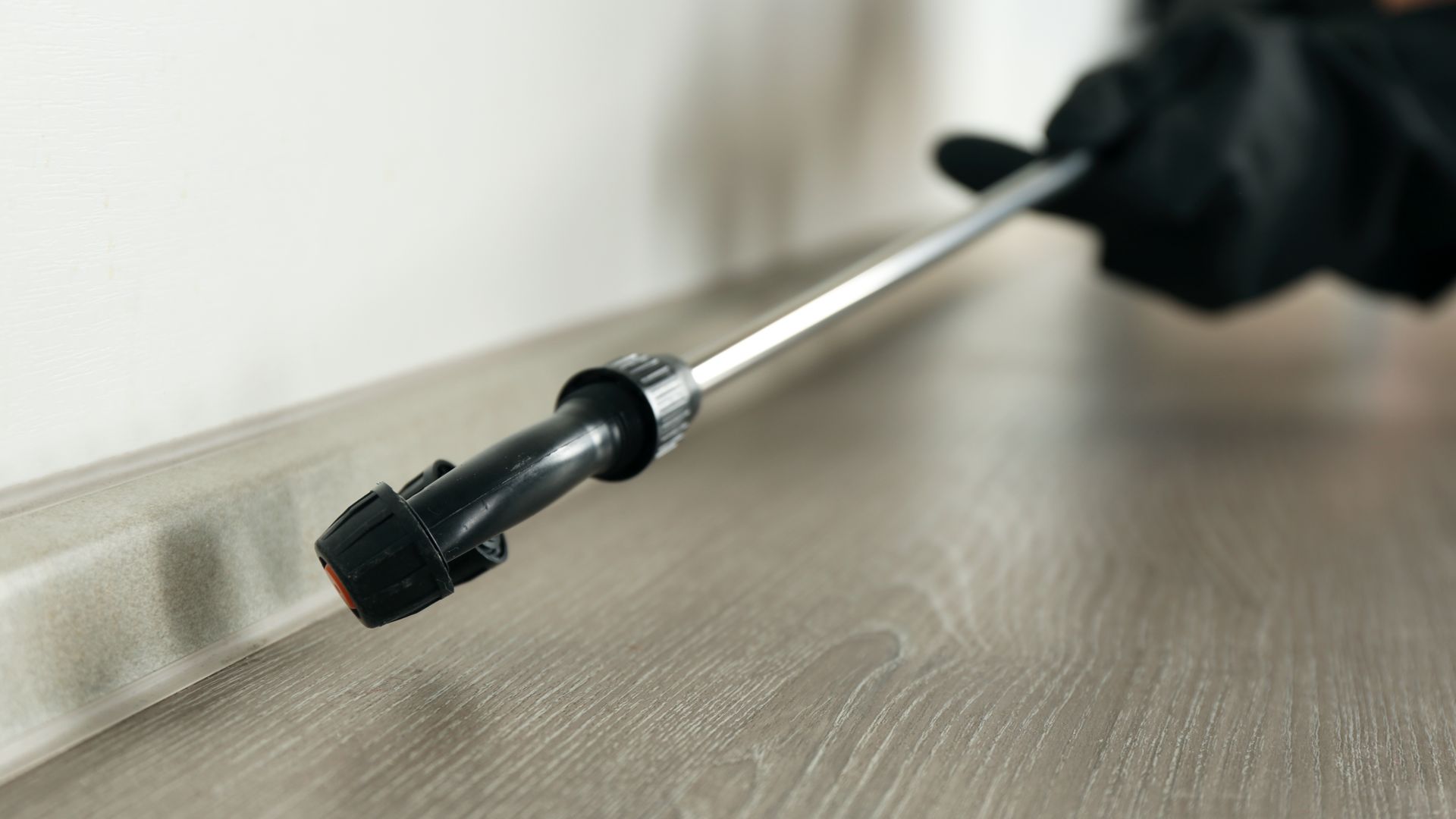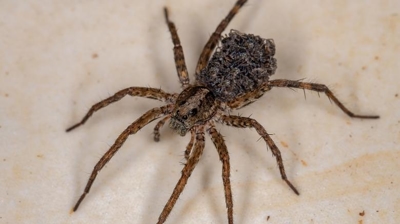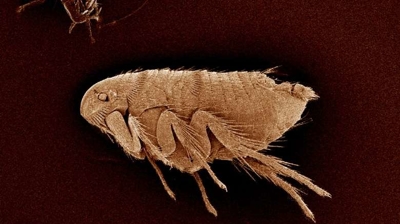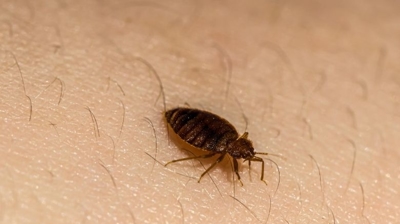
Wood Cockroaches
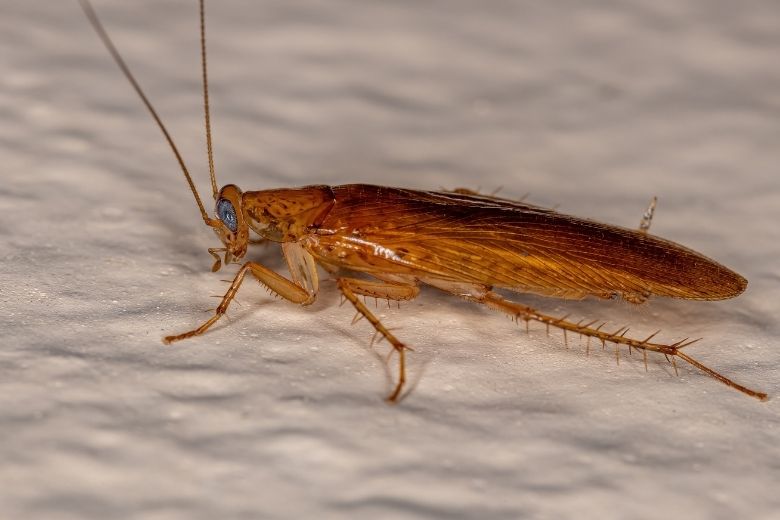
Are Wood Cockroaches Harmful?
Wood cockroaches, often referred to as "wood roaches" or "outdoor roaches," are a type of cockroach species that primarily inhabit outdoor environments. They are different from the common household cockroach species. Wood cockroaches are generally not considered dangerous to humans, and here is why:
- Habitat and Behavior: Wood roaches typically live in forested or wooded areas. They prefer decaying wood, leaf litter, and other organic matter as their natural habitat. Unlike household cockroaches, they are not adapted to indoor living and are not commonly found within homes.
- Non-Invasive: Wood roaches are not known to infest houses or structures. They usually stay outdoors, feeding on decomposing plant material and fungi. They do not carry the same health risks associated with indoor cockroaches, which can contaminate food and spread disease.
- Diet: These roaches are primarily herbivorous, feeding on decaying wood, leaves, and plant matter. They do not scavenge for human food or come into contact with human waste, reducing the risk of transmitting pathogens to people.
- Low Health Concerns: Wood roaches are not a known vector for diseases that affect humans, unlike some other cockroach species. The main health concerns associated with cockroaches come from indoor species that can pick up pathogens in unsanitary environments.
- Lack of Aggressiveness: Wood roaches are not aggressive and do not exhibit the same behaviors as some indoor cockroaches, which may scatter when disturbed. They are generally docile and do not pose a threat to humans.
- Limited Interaction: Even in outdoor settings, wood roaches are not commonly encountered by people. They tend to be more active at night and prefer to remain hidden during the day, further reducing the chances of interaction.
While wood roaches are not considered dangerous, it's essential to remember that any interaction with wildlife, insects, or outdoor creatures should be done with care. In some cases, they may enter homes accidentally, but their presence is typically temporary and does not necessitate the same control measures as indoor cockroaches. If you find wood roaches in your home, it's advisable to safely relocate them back to their natural habitat rather than resorting to chemical pesticides, as these creatures serve a role in the ecosystem and are generally harmless to humans.
Learn more: Do Wood Cockroaches Bite?
Wood Cockroach Removal
Getting rid of wood cockroaches is important for several reasons, even though they are generally considered less harmful than German cockroaches and American cockroaches. Addressing them promptly helps protect both property and health while maintaining a comfortable living environment:
- Preventing Property Damage: Wood cockroaches, while primarily outdoor dwellers, often enter homes in search of food or shelter, particularly during the warmer months. They can damage wood, paper, cardboard, and fabric if infestations are left unchecked. While the damage is less severe than that of termites or carpenter ants, large numbers can still create significant issues over time, especially in basements, attics, or crawl spaces.
- Avoiding Secondary Infestations: Wood cockroaches can attract other pests. Their presence may draw predators like spiders or rodents into the home. Moreover, if ignored, they can signal conditions that support other infestations, such as moisture problems or cluttered storage areas, which can harbor more destructive pests.
- Health Concerns: Although wood cockroaches do not carry disease as aggressively as some other species, they can still contribute to allergic reactions and asthma. Their shed skins, feces, and body parts contain allergens that can worsen respiratory problems or trigger allergic responses in sensitive individuals. Large populations inside the home increase these risks.
- Nuisance and Quality of Life: Wood cockroaches, even though they primarily stay outdoors, can be startling when they appear indoors. Their rapid movement and tendency to fly toward light sources can cause discomfort and stress for occupants. In high numbers, they can make areas like kitchens, bathrooms, or laundry rooms less hygienic and less pleasant to use.
- Early Intervention Saves Money: Addressing wood cockroach issues early prevents escalation into a more severe infestation. Once they establish in a home, eradication becomes more complex and costly, often requiring our professional intervention and multiple treatments. Proactive management is more efficient and less expensive than reactive solutions.
- Indicator of Environmental Conditions: The presence of wood cockroaches can indicate underlying environmental issues, such as excess moisture, decaying wood, or improper yard maintenance. Tackling the infestation often reveals and corrects these conditions, leading to overall healthier and safer living spaces.
Eliminating wood cockroaches isn’t just about removing an occasional nuisance—it protects property, health, and quality of life, and prevents minor infestations from turning into larger, more expensive problems. Effective control typically combines habitat management, exclusion, and targeted pest control measures.
Learn more: How To Get Rid Of Wood Cockroaches
Wood Cockroach Control
Hiring our professional pest control for wood cockroaches is the most effective solution because these insects, while not typically breeding indoors like German or American cockroaches, can still become a persistent nuisance and pose unique control challenges. Here’s why our professional services are the best choice:
- Accurate Identification & Inspection: Wood cockroaches are often mistaken for other cockroach species, which can lead to wasted time and money on the wrong treatments. Our professionals will properly identify the species and assess entry points, such as woodpiles, mulch, and exterior lighting that attract them.
- Targeted Treatment Plans: DIY sprays and baits rarely work against wood cockroaches since they generally live outdoors and only wander inside. Our professionals use tailored treatments—such as perimeter applications, exclusion strategies, and habitat modification—to cut off access at the source.
- Prevention of Recurring Infestations: Even if you kill the roaches you see, more may keep entering from outside. We focus on long-term prevention, sealing cracks, reducing attractants, and applying barriers that prevent wood cockroaches from migrating indoors.
- Expertise in Habitat Management: Wood cockroaches thrive in damp, wooded environments near homes. Our professionals not only treat the infestation but also advise you on landscaping changes, firewood storage practices, and lighting adjustments that make your property less inviting.
- Safety & Proper Chemical Use: Over-the-counter products can be misapplied, posing risks to your family, pets, and environment. Our licensed exterminators use EPA-approved methods safely and effectively, minimizing unnecessary pesticide exposure.
- Peace of Mind: Instead of continually spotting roaches in your home or business and wondering if they’re multiplying indoors, our professional pest control provides assurance that the problem is identified, addressed, and under control.
Wood cockroaches aren’t usually a sign of poor sanitation, but they are tough to manage without professional intervention. Our pest control experts eliminate the guesswork, keeps them out for good, and protects your property from ongoing invasions.
Wood Cockroach Exterminators
Hiring our local exterminators rather than a national pest control company for wood cockroach infestations can offer several significant advantages:
- Expertise with Local Pest Populations: Our local exterminators have extensive knowledge of the specific wood cockroach species in the area, their behaviors, seasonal patterns, and preferred habitats. National companies often use standardized treatment protocols that may not account for regional variations. Our local experts tailor our strategies to the exact species and environmental conditions in your neighborhood, improving the likelihood of complete eradication.
- Accurate Identification: Wood cockroaches are often confused with German cockroaches and/or American cockroaches, leading to unnecessary or ineffective treatments. Our local exterminators can quickly and accurately identify the species, allowing us to target the right areas with the most effective products and methods. This precision prevents wasted time and expense.
- Customized Treatment Plans: National companies often employ cookie-cutter approaches, typically relying on generalized chemical applications that most likely do not fully address hiding spots like woodpiles, mulch, or crawl spaces. Our local exterminators assess your property comprehensively and design a treatment plan that addresses both indoor and outdoor harborages, which is crucial for wood cockroach control since they predominantly live outdoors but migrate inside.
- Faster Response and Follow-Up: Our local exterminators can usually respond more quickly, often the same day or within 24 hours, and will provide more frequent follow-ups as needed if the infestation persists. National companies may have longer wait times, and follow-ups are often limited, or handled by different technicians who are unfamiliar with your property.
- Personalized Service and Accountability: Our local team thrives on our community reputation. We are more invested in providing high-quality service and ensuring customer satisfaction because word-of-mouth and repeat business are essential. With national companies, you often deal with rotating staff and impersonal service, making it harder to ensure consistency or hold anyone accountable if the problem isn’t resolved.
- Environmental and Safety Considerations: Our local exterminators utilize integrated pest management (IPM) techniques specific to the region, minimizing unnecessary chemical use while maximizing overall effectiveness. National companies often rely on standardized chemical-heavy treatments that aren’t always necessary and may sometimes pose unnecessary risk to family members, pets, or landscaping.
- Long-Term Prevention: Because we are familiar with local conditions, including common outdoor harborage and seasonal behavior patterns, our local exterminators provide targeted advice to prevent future infestations. This could include recommendations on mulch management, woodpile storage, drainage solutions, and sealing entry points—practical measures that national companies often overlook.
For wood cockroaches, which are heavily influenced by local environment and seasonality, our local exterminators combine precision, speed, and a customized approach that a national chain rarely matches. This means faster elimination, lower long-term costs, and a much higher likelihood that the infestation won’t return.
Wood Cockroach Solutions
Our exterminators use integrated pest management (IPM) to deal with wood cockroaches because this approach addresses the root causes of the problem rather than relying solely on chemical treatments. Wood cockroaches typically originate outdoors and enter structures due to environmental conditions such as excess moisture, decaying organic matter, or easy access points. IPM allows our professionals to evaluate these contributing factors, identify why the insects are present, and apply targeted solutions that prevent ongoing intrusion instead of offering only temporary relief.
Another key reason IPM is preferred is that wood cockroaches behave differently from indoor-infesting species. They do not breed inside homes and are usually accidental invaders. Broad-spectrum pesticide applications inside living spaces are often unnecessary and ineffective in these cases. IPM emphasizes proper identification, monitoring, and strategic treatment, ensuring that control measures are appropriate for the biology and habits of wood cockroaches, which improves outcomes while avoiding overuse of chemicals.
IPM also prioritizes exclusion and habitat modification, which are especially important for wood cockroach control. Our exterminators focus on sealing entry points, correcting moisture issues, improving ventilation, and removing exterior attractants such as leaf litter, firewood, and mulch near foundations. By making the environment less favorable, IPM reduces the likelihood of repeat invasions and provides longer-lasting protection than reactive spraying.
Integrated pest management supports safety, environmental responsibility, and regulatory compliance. Wood cockroaches are often seasonal and sensitive to environmental changes, so IPM allows for precise, limited chemical use only when necessary. This minimizes exposure risks for occupants, pets, and beneficial organisms while still delivering effective control. For our professional exterminators, IPM represents a balanced, science-based strategy that resolves the issue efficiently, responsibly, and with sustained results.
What Do Wood Cockroaches Look Like?
Wood roaches, also known as wood cockroaches or outdoor roaches, have distinctive characteristics that set them apart from indoor cockroach species. Here is a description of what wood roaches typically look like:
- Size: Wood roaches are generally smaller in size compared to indoor roaches, with adults typically ranging from 0.5 to 1 inch (1.3 to 2.5 cm) in length.
- Color: They are typically reddish-brown to dark brown in color, and their bodies may have a glossy appearance. Some wood roach species may exhibit variations in color, but they usually have a similar range of earthy tones.
- Body Shape: Wood roaches have elongated, slender bodies with long, spindly legs. Their bodies are flat and well-suited for maneuvering in outdoor environments.
- Antennae: They have long, slender antennae that can be as long as or longer than their bodies. These antennae are used for sensory purposes, helping them navigate and locate food and mates in their natural habitat.
- Wings: Many wood roach species have wings but are not strong fliers. Their wings typically extend beyond their bodies, but they do not fly as efficiently as some indoor roaches.
- Pronotum: The pronotum, which is the plate-like structure that covers the upper part of the thorax, is often more pronounced in wood roaches. It can be an identifying feature, with various species having distinct patterns or markings on it.
- Habitat: Wood roaches are primarily found outdoors in natural environments. They prefer wooded areas, leaf litter, and decaying organic matter, which is where they feed and reproduce.
- Behavior: Unlike indoor roaches, wood roaches are not adapted to living indoors. They do not infest homes, and any indoor sightings are usually accidental. Wood roaches are attracted to light and may be found near windows or light sources at night.
Wood roaches are small to moderately sized, reddish-brown to dark brown roaches with elongated bodies, long antennae, and a preference for outdoor habitats. They are not considered pests in the same way as indoor cockroaches and are generally harmless when encountered indoors.
Where Are Wood Cockroaches Found?
Wood roaches, also known as wood cockroaches or outdoor roaches, are typically found in outdoor and natural environments. They have adapted to live in various wooded areas and habitats where they can find decaying organic matter and moisture. Here are some common places where you might encounter wood roaches:
- Wooded Areas: Wood roaches are most commonly found in forests, wooded areas, and parks. They inhabit the leaf litter, under bark, and in rotting logs or stumps.
- Gardens and Landscapes: They can also be present in garden areas, especially in mulch, compost piles, and other organic matter-rich environments.
- Firewood Piles: Wood roaches are known to hide in and around stacks of firewood, as it provides them with shelter and a source of decaying wood.
- Leaf Litter: In the fall and winter months, wood roaches often seek shelter in leaf litter on the forest floor. They may burrow into the leaves to protect themselves from the cold.
- Compost Bins: If you have a compost bin in your backyard, it's not uncommon to find wood roaches among the decaying plant material.
- Rocky Areas: Some species of wood roaches are adapted to rocky environments, where they hide in crevices and under rocks.
- Under Tree Bark: Wood roaches may seek shelter under the bark of trees, where they feed on decaying plant material and fungi.
- Moist Environments: They are more likely to be active in areas with sufficient moisture, as they require water for survival. This could include areas near streams, ponds, or damp soil.
- Outdoor Lights: Wood roaches are attracted to artificial lights at night. You may occasionally find them near outdoor light fixtures or windows if they are drawn to the light source.
Wood roaches are not considered household pests and are generally harmless. They play a role in ecosystems by aiding in the decomposition of organic matter. If you encounter wood roaches indoors, it's usually because they were attracted by light sources and can typically be removed easily without the need for extensive pest control measures.
What Do Wood Cockroaches Eat?
Wood roaches, also known as wood cockroaches or outdoor roaches, have specific dietary preferences that are closely tied to their natural habitat. They primarily feed on decaying organic matter and play a beneficial role in ecosystems by aiding in the decomposition process. Here's an overview of what wood roaches typically eat:
- Decaying Wood: Wood roaches are particularly adept at consuming and breaking down decaying wood. They feed on wood that is in various stages of decomposition, including fallen logs, rotting tree stumps, and other woody debris found in wooded areas.
- Leaf Litter: In forested environments, wood roaches often forage in leaf litter on the forest floor, where they consume fallen leaves that have begun to decompose.
- Plant Material: While wood roaches primarily consume decaying wood, they may also eat other types of plant material, such as decomposing plant matter, fungi, and algae.
- Fruits and Vegetation: Some wood roach species have been observed feeding on fruits, flowers, and fresh vegetation in their natural habitat, particularly when other food sources are limited.
- Microorganisms: Wood roaches may ingest various microorganisms that thrive in decaying organic matter, including bacteria and fungi.
Wood roaches are herbivorous and specialize in breaking down cellulose, a complex carbohydrate found in plant cell walls. They have specialized digestive systems that allow them to digest and extract nutrients from the cellulose in decaying wood and plant material.
Unlike common household roaches, wood roaches do not seek out human food sources, contaminate living spaces, or pose health and hygiene risks. They are beneficial in natural ecosystems as decomposers, helping to recycle nutrients and contribute to the breakdown of organic matter in wooded and outdoor environments.
Wood Cockroach Life Cycle
The life cycle of wood roaches, like many other cockroach species, consists of several stages, including egg, nymph, and adult. However, wood roaches have some specific characteristics and behaviors that differentiate them from household roaches. Here is an overview of the life cycle of wood roaches:
- Egg Stage: The life cycle begins when a female wood roach deposits her eggs in a sheltered location, often within decaying wood, leaf litter, or other organic material in their outdoor habitat. Wood roach eggs are encased in protective capsules called oothecae, which are usually carried by the female until they are ready to hatch. Each ootheca can contain multiple eggs. The time it takes for wood roach eggs to hatch can vary depending on environmental conditions and species, but it typically ranges from a few weeks to a few months.
- Nymph Stage: After hatching from the ootheca, wood roaches emerge as nymphs. Nymphs are essentially miniature versions of adult roaches but lack wings. Nymphs go through a series of molts as they grow, shedding their exoskeleton to accommodate their increasing size. The nymph stage typically lasts for several months, and the number of molts can vary by species.
- Adult Stage: When wood roaches reach maturity, they become winged adults. The time it takes to reach adulthood can vary based on species and environmental conditions. Adult wood roaches are responsible for reproducing and continue the cycle by laying eggs and protecting the oothecae. Wood roaches are adapted to living in outdoor environments and do not reproduce indoors or infest homes. Unlike common household roaches, they do not reproduce prolifically and do not pose the same health and hygiene risks. Wood roaches primarily contribute to the decomposition of organic matter in their natural habitats.
The specific duration of each life cycle stage and the overall life span of wood roaches can vary among species and is influenced by factors such as temperature, humidity, and the availability of food and shelter in their natural habitat. However, the general life cycle described above is characteristic of these outdoor roaches.

Hear From Our Happy Customers
-
"Exceeds Expectations"
I can’t say enough positive things about this company... The tech that came out, Jarvis went above and beyond my expectations. Thank you guys, I will continue using your services.
- Jake M. -
"Very Knowledgeable"
The tech that arrived was courteous, professional, and very knowledgeable. He was Great.
- Uerial I. -
"Great Communication"
Tech was on time, communication was great, and he accommodated my needs.
- Alonzo W. -
"Professional & Considerate"
I’m pleased with Miche services. Jarvis came today. Professional and considerate. Thank you!
- Judy B. -
"Fantastic & Patient"
Jarvis was fantastic and patient. He answered my questions with an in-depth explanation and addressed all of my areas of concern. Would love for him to be my assigned tech going forward. Well done!
- Yonnette M. -
"Wonderful Service"
Wonderful service. Jarvis is great. Took care of everything I needed. Thank you!
- Henry P.
